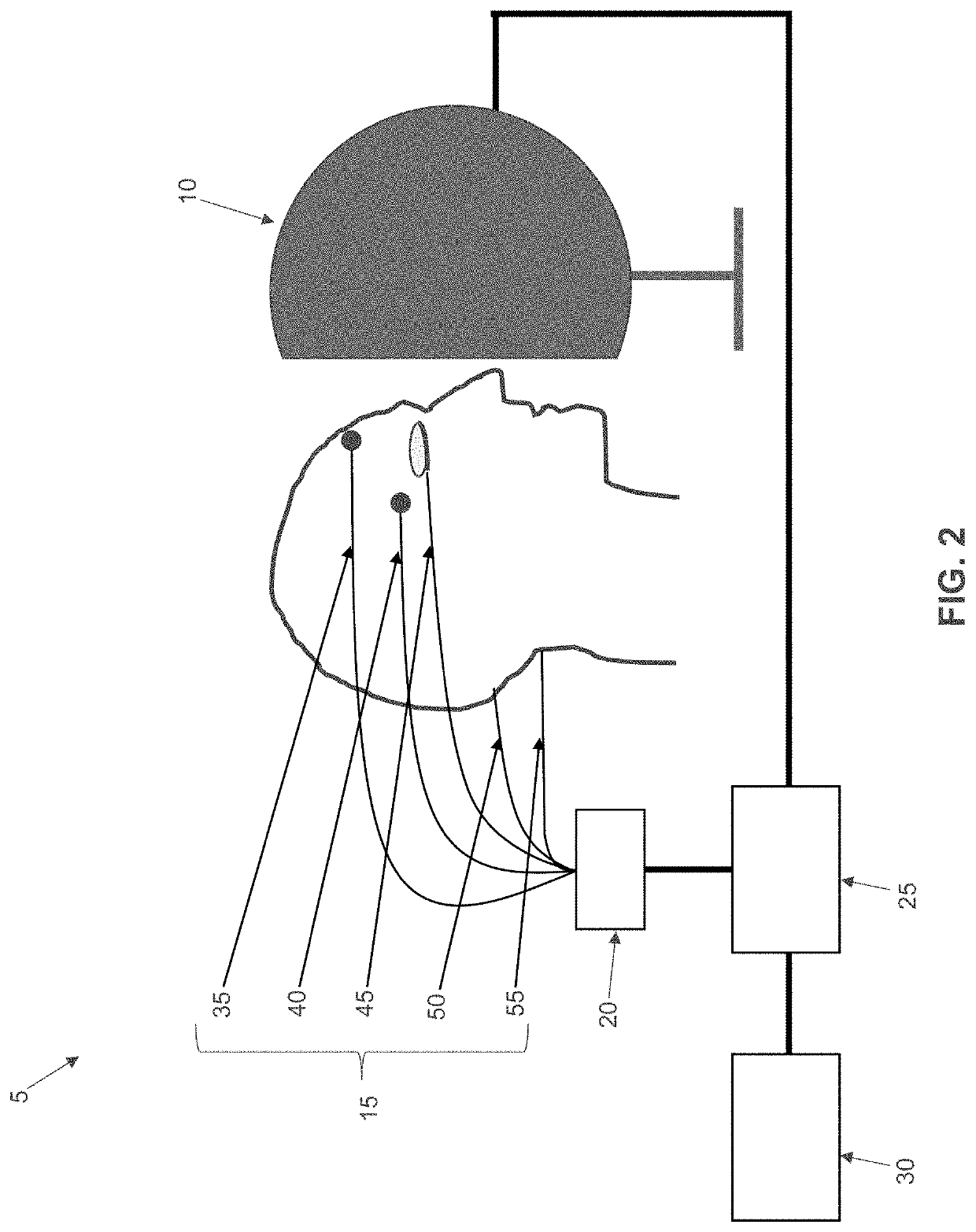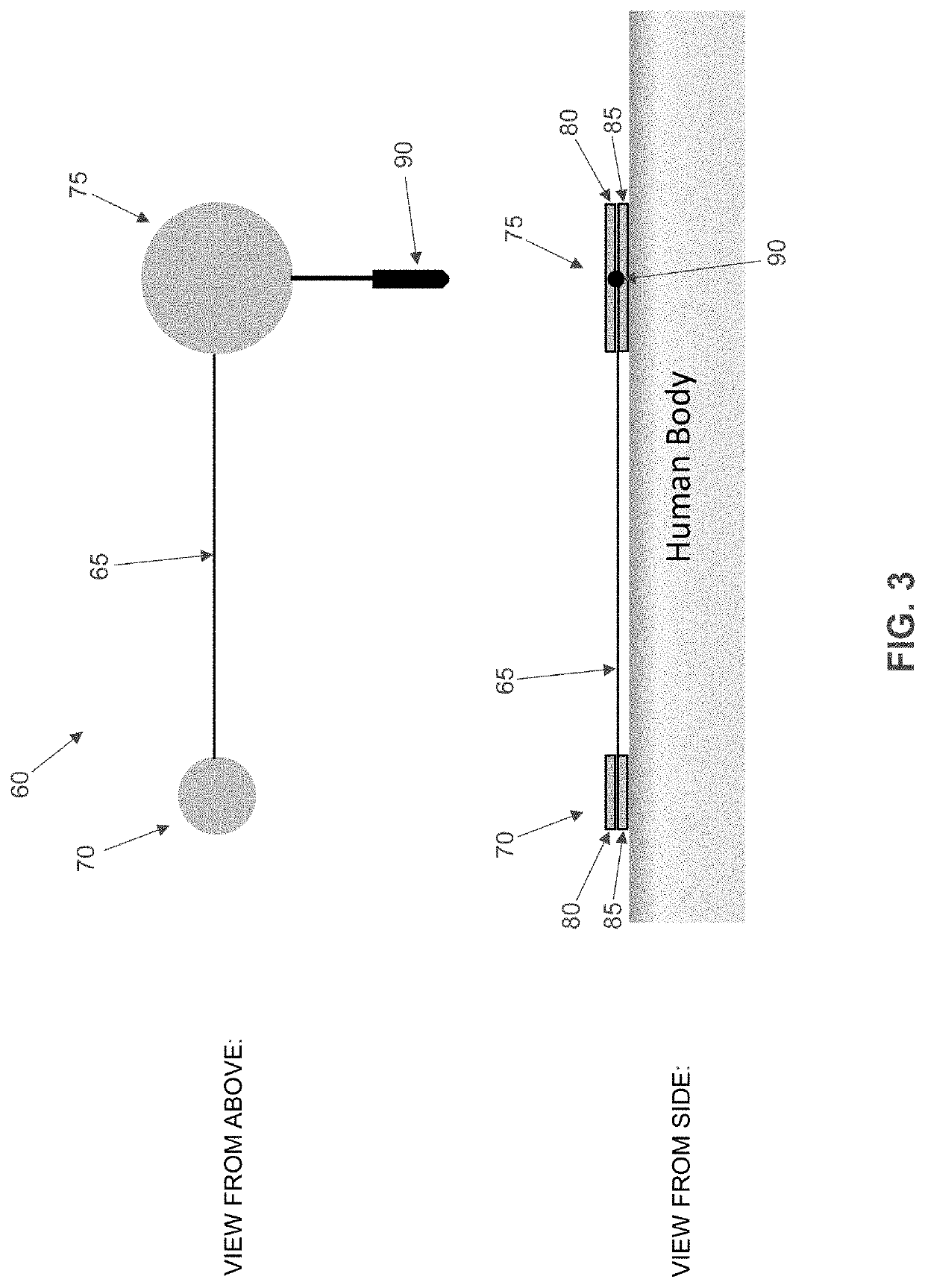Method and apparatus for performing electroretinography, including enhanced electrode
a technology of electroretinography and electrodes, applied in the field of electroretinography methods and electrodes, can solve the problems of significant confounding factor, no valid test being recorded, wasted time by test subjects, technicians, clinicians,
- Summary
- Abstract
- Description
- Claims
- Application Information
AI Technical Summary
Benefits of technology
Problems solved by technology
Method used
Image
Examples
Embodiment Construction
[0083]The present invention comprises the provision and use of a new and improved DTL-style electrode comprising (i) a bipolar electrode, (ii) a conductive thread configured to measure the electrical response of only a select portion of the region of the eye contacted by the conductive thread, and / or (iii) sticky pads for mounting the novel electrode in place which permit a wider range of options for accurate placement of the electrode relative to the test subject's eye.
[0084]More particularly, the present invention can be characterized by reference to three novel aspects that can be used independently of one another, or in combination with one another, in order to improve the performance, inter-session repeatability, and cost effectiveness of performing ERG tests when compared against use of a traditional DTL electrode.
[0085]To summarize, the first novel aspect of the present invention comprises the provision and use of an electrode comprising a thin coating of non-conductive mater...
PUM
 Login to View More
Login to View More Abstract
Description
Claims
Application Information
 Login to View More
Login to View More - R&D
- Intellectual Property
- Life Sciences
- Materials
- Tech Scout
- Unparalleled Data Quality
- Higher Quality Content
- 60% Fewer Hallucinations
Browse by: Latest US Patents, China's latest patents, Technical Efficacy Thesaurus, Application Domain, Technology Topic, Popular Technical Reports.
© 2025 PatSnap. All rights reserved.Legal|Privacy policy|Modern Slavery Act Transparency Statement|Sitemap|About US| Contact US: help@patsnap.com



